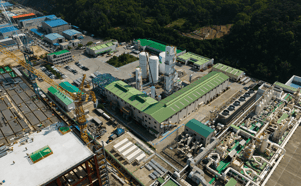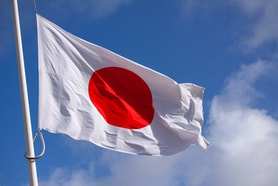Synergy, synthesis and success – gasworld’s East European Conference
Economic transformation has driven East Europe forward, yet the need exists to develop and modernise the region’s gases business.
Getting to the core of this subject was the gasworld Eastern Europe Conference 2010, held in the heart of Ukraine from 20th – 21st May.
Entitled Industrial Gases: East meets West, the conference aimed to unite the decision makers from the global gases community and provide a platform for plenty of discussion and debate.
After the chaos and disruption caused by a certain Icelandic volcano recently, we had been left wondering whether East really would meet West, as much of Europe’s commercial aviation industry ground to a halt.
But the ash cloud beat a timely retreat and gasworld welcomed more than 100 delegates to the Rus Hotel in Kiev, Ukraine. Of those, up to 45% were East Europeans and ensured that the conference truly met its objective – to bring together the East and West points of the global gas compass.
Market development
Having achieved its fundamental goal and attracted attendees from as far as the US, UK, India, and both East & West Europe, the focus turned to the gases business and climate for investment in Eastern Europe.
Currently operating an under-developed industrial gas market and driven on by a need to modernise ageing equipment & infrastructure, the region’s gas industry is keen to embrace both the investment and expertise of its Western peers.
Before exploring how the Western gas companies can enhance operations in the East, however, it’s important to understand the dynamics of region in question itself. And that’s exactly what the conference was able to deliver, as an array of respected, established figureheads provided key insights into the nuances of gases in Eastern Europe.
Respected industrial gas luminary Lars Timner, with decades of experience of spearheading AGA’s operations in Central & Eastern Europe, discussed the Historical Development of Industrial Gases in Eastern Europe in his presentation. He urged, “In my opinion you have to have knowledge and you have to have a strategy. And you have to demonstrate ambition – I think at AGA we had the drive and ambition to see the strategy through.”
“You have to select the team and provide the support, giving them proper training and giving them support. And finally, you need the capital for investments, that much all of us know.”
“I am pleased to see that the international gas companies are committed to contributing to the market development in Eastern Europe.”
This was followed by the Spiritus Group’s John Raquet, who discussed the Current Day Market and Trends in the CIS. Raquet noted the sheer size of the region alone and its veritable wealth of mineral and energy resources, all of which bode well for a flourishing market in the future.
“First of all,” he said, “we have a vast land mass in the CIS, it’s a huge area and clearly is a region of opportunity. That’s my belief and I also think there are many companies out there that feel the same.”
“It has a reasonably developed transport infrastructure, but it does need improving and expanding. And there is growing investment focus within the region, we’ve seen that in the Baltic States over the past ten years, and we’re now beginning to see that in other countries.”
Raquet positively concluded, “The important thing is that this region is attracting the major players and one of the significant benefits from these players is the key ‘toolkit’ – knowledge, know-how and application. I believe that there really is a strong growth opportunity for this region.”
A further assessment of the region’s dynamics and business climate was provided in the morning’s second session, as associate consultant Daniel Gambet, Dary Pryrody’s Andrey Medinskiy, and the European Industrial Gases Association’s (EIGA) Andy Webb all graced the gasworld stage.
Representing Spiritus/AAA Green, Gambet eulogised about the need for and benefits on outsourcing industrial gas supply and elucidated, “Why outsourcing? There are many reasons, the main of which is probably cost savings. The other major reason is the focus on core business. More and more companies need to focus on their own business, and cannot afford for resources to be used for other, non-core business/applications.”
“Knowledge is an important issue, it is a cross-fertilisation benefit that you enjoy as a client of outsourcing – sharing knowledge and experience of operating these plants. This knowledge translates into operational expertise to provide gases to the highest standard.”
“Outsourcing gets a better result and a more efficient way of doing the business: you have the main use of the product produced. There are also additional by-products. If you are optimising energy efficiency, then you are also optimising and streamlining manufacturing costs.”
Meanwhile Medinskiy described the currently difficult business climate that epitomises the region. He said, “Unfortunately, the gases business [in Ukraine & Russia] cannot develop fast enough, largely due to processes, legislation and financial mechanisms – it can be difficult to process matters quickly. That is why striking a contract can be a problem, finalising an agreement can take so long.”
Medinskiy did, however, end on a positive note and encouraged, “But it can only take a matter of time before we overcome these hurdles and doing business in the Ukraine becomes a much smoother concept.”
On that optimistic note the morning’s presentations came to a close, and the interaction resumed at the delightful lunch break provided courtesy of kind sponsor Union Engineering.
Maximising operations
As experts in the field of CO2 production and recovery, Union Engineering also had a notable presence after the lunch break, as the company’s very own Henrik Lyhne presented his paper Carbon Dioxide Production Technology. Lyhne noted how, “The future design of CO2 plants is challenging the designers need to make these capable of meeting new regulations and concerns.”
Hydrogen Technologies’ Iain Alexander Russell had preceded Lyhne’s presentation with his discussion of Hydrogen Production Electrolyser Units and how their profitability, predictability, independence and flexibility could prove so valuable in the future, while Technex’s Igor Voronin rounded off the day’s presentations.
Voronin presented Professional Support of Industrial gas Logistics and Air Separation Plant Project Management, explaining the rich history Technex has in this field and described how the company has ‘experienced staff with a deep background in the field of cryogenics and consulting’.
It seemed fitting that Voronin, a native of Ukraine, should have provided the concluding presentation of day one, given that he would also be opening day two of the event as the morning’s first chairperson.
Presiding over session four, titled Bulk Operations, Voronin welcomed delegates following a fine night’s dining & entertainment at the gasworld Gala Dinner the night before. He opened, “I hope everyone is enjoying their stay in Kiev and this will remain in your memory as a good stay in our country.”
CryoGo’s Hannes Rucker promptly stepped-up to discuss Maximising Payload of Bulk Liquids, during a morning where the emphasis was clearly on maximising efficiencies and operations for all – especially those in the Eastern Europe gases business.
Such a theme is especially relevant during difficult days of recession, while the relatively inefficient and under-developed gases business in the region might also benefit from shared knowledge and expertise in this area. Rucker said, “It’s a key decision to invest in an ASU or plant, because once you go for that plant, it is going to be there for a long time. It is a long-term investment. What we do in-between the plant and the customer site is very important.”
“The air gas industry has always been very forward looking, with a great deal of research and development and investment in developing & going forward. But the message is very clear, it is coming across loud and clear: we need to save costs, we need to become more efficient. And maximising payload is important in achieving that goal.”
“Cryogenic tankers are investment heavy, but will be in your fleet for a long time, so it is crucial to get your investment right. Choosing the right design and the optimum software is part of that decision making,” he concluded.
Other highlights of the morning session included Chart Ferox’s Roland Wagner presenting the paper Flow Meters for Bulk Tanker Distribution and a presentation from Cryostar’s Laurent Reichenshammer, who discussed Pump Technology for Bulk Liquids.
Further still, as the morning moved to session five and the subject of Cylinder Operations, delegates were treated to papers from Rexarc’s Bruce Holman, Worthington Cylinders’ Andrey Ruban, Swiss TS’ Leon Kaelin, and Don Renner of Weldcoa.
Holman presented Acetylene Production/Filling Technologies, Ruban explained Strategies for Upgrading Cylinder Assets, Kaelin provided information concerning Cylinder Testing Methods, while describing in detail both the processes and merits of ultrasonic testing techniques. Renner concluded the day’s official discourse with an entertaining discussion of Automated Cylinder Filling Facilities.
It was then left to gasworld’s very own Business Development Manager, Kevin Murphy, to close the conference before exiting to the inviting lunch sponsored by Odessa-based specialty gases provider Iceblick Ltd.
Alluding to the event’s fundamental objective and its success in meeting this goal, Murphy brought proceedings to an end, “We’ve now come to the conclusion of the conference and East meets west. We at gasworld sincerely hope that you’ve enjoyed the experience as much as we have. We hope that you have all made many, many friends and met your objectives.”
“Our objective at gasworld conferences is to bring people together from all areas of the industrial gases industry and we try to cover all aspects of our Discuss, Debate, Converse theme – we hope that we have succeeded.”
“Finally, our thanks go to you – our delegates, for taking the time out to attend and contribute to this thoroughly successful event. Special thanks too, to our East European friends and colleagues, we sincerely hope that we will enjoy your company on many more occasions to come.”
Synergy
With the conference closing to rapturous applause, it was left to all involved to reflect on the synergy, synthesis and success of the two days to have passed.
With such a strong attendance and a truly international infusion of influences, the conference was successful in bringing together the decision makers and ensuring East meets West. Attracting esteemed Eastern European attendees such as Ankor Engineering’s Alex Tomkeev, UA-SIGMA’s Georg K. Lavrenchenko, IGMA’s Vladimir Pantyashin, Cryogen-Expo’s Vladimir Bannikov and Elena Prokopchuk of Uralkid only heightened this spirit of collaboration.
So too did the healthy interest in the promotional booth opportunities, as a number of delegates conveyed their pleasure and excitement at the strong booth participation.
On the sidelines of the conference, M1 Engineering’s Jason Gill told gasworld, “It’s going great, good interest in the promotional booths. For us it’s about getting our name out there and introducing M1 Engineering to the rest of the world – and this conference is meeting that objective.”
... to continue reading you must be subscribed










